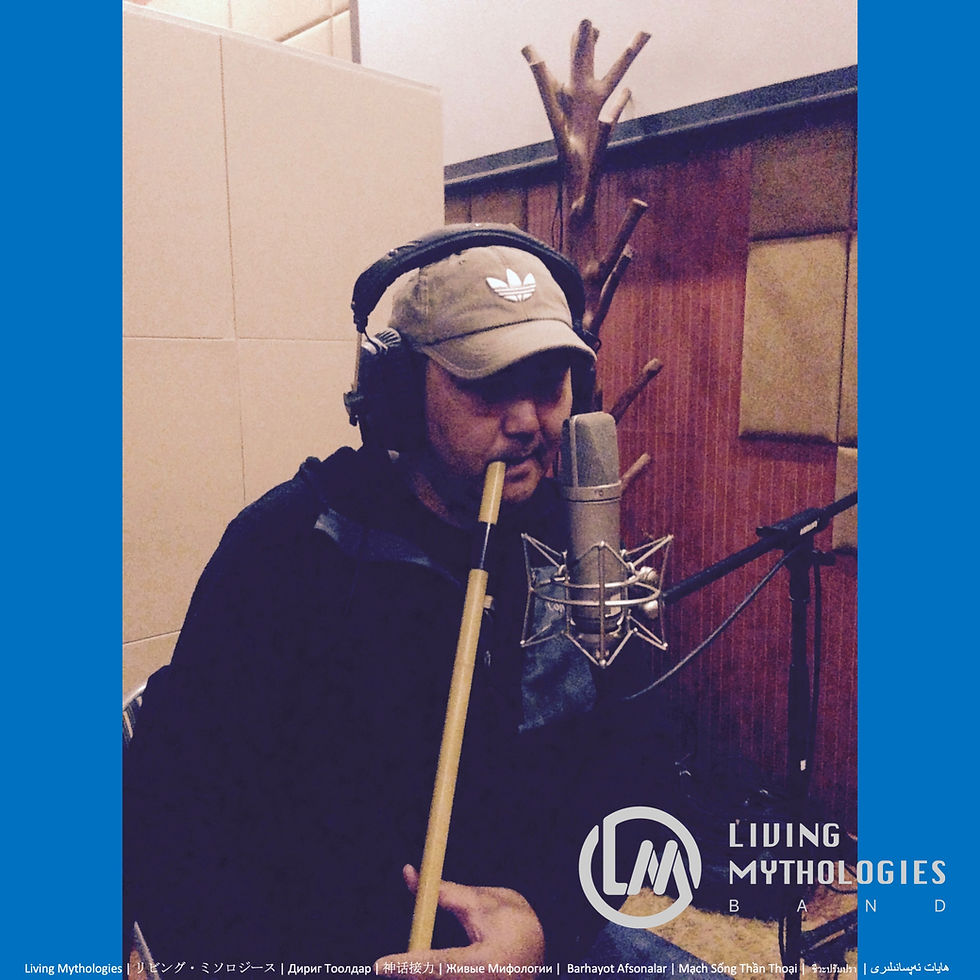【Instrument】The Tsuur / 苏尔
- 纪鹏
- May 26, 2019
- 3 min read

The Tsuur (Chinese name: 苏尔; Tuvan name: шоор) is a grass flute, made of the stalk of a grass traditionally, similar to many flutes, is a Tuva instrument and was included in the non-material cultural protection project in 2007 by UNESCO.
图瓦苏尔(英文名:Tsuur; 图瓦语名:Чуур)草笛,用芦苇草根制成,类似笛子,是图瓦人的乐器,2007年被联合国教科文组织列入非物质文化保护项目。
The Tsuur found at Kanas Lake, in northwest China, is made of hollowed out stalks (reeds) of the genus Polygonaceae, which is called 'Mandalesi' by the local Tuvans. It is 50 cm in length and has 3 holes, the tube is rough and not regular. On the other hand, the Tsuur tube found in the Republic of Tuva (Russian Federation) has five sound holes (and at present in their tradition, the tube body is made exclusively of PVC tubing). Hollow, slender, the shape of the instrument is similar to the Chinese Xiao. The materials used to make Tsuur are particular: they cannot be too thick or too thin. There are three round holes in the pipe body, and the distance and size are very neatly positioned. The first hole has a distance of four fingers from the second hole, and the third hole is four fingers away from the second hole.
在中国西北地区的喀纳斯胡的图瓦苏尔是由一种被图瓦人称为‘芒达勒西’的苇科植物茎杆(芦苇)经掏空钻孔做成的,长度50厘米,有3个孔,管身比较粗糙,也不规整。而俄罗斯图瓦共和国的苏尔管身上则有5个音孔,经改良,管身多由PVC管制成。中空、细长,乐器的形状类似萧。制作苏尔的材料有讲究,不能太粗也不能太细。管体上有三个圆孔,之间的距离和大小很整齐。第一孔离第二孔有四指的距离,第三孔距第二孔又是四指距离。

Radik Performing Tsuur During Studio Session
神话接力乐手拉迪克·图鲁什在录音棚里吹奏苏尔
When playing the Tsuur, the tube body should be vertical, with two hands holding it, and the two index fingers and the middle finger respectively controlling the three sound holes. The upper end of the tube sits close to the performer's lower lip from where the sound is emitted. According to experts, "Tsuur" is what was regarded as the famous "Hujia" in ancient China and has a long history.
吹奏苏尔时,管身要竖置,双手持管,两手食指、中指分别按放3个音孔。上端管口贴近下唇,吹气发音。据专家认为,“苏尔”就是中国古代大名鼎鼎的“胡茄”,历史可谓悠久。
The Legend of Arbu and his Tsuur:
Once upon a time, there was a Tuva old man named Arbu, who created the Tsuur, and he could stay up all night playing it. The locals said that he was not ordinary, and he called him ‘Tsuur ghost’. When Arbu was 60, he married a 30-year-old wife who was moved by the sound of the flute. Later, when he went hunting in the mountains, he only played and did not hunt down any animals. Finally, after a long time, his wife said, ‘the trees are old, the leaves are gone, can the sparrows go up and down? After listening to this, Arbu decided to leave, and while he was walking, he expressed his sorrow with the Tsuur. As a result, the wild sheep and deer along the mountains were attracted near to him by his music, and upon seeing this, his wife’s heart melted and she ran back to him. Following, she urged him to return home and together they lived happily thereafter.
阿尔布的苏尔传说:
从前,有一个叫阿尔布养的图瓦老人创造了苏尔这种乐器,吹起来可以一夜不睡,当地人说他不一般,都叫他‘苏尔鬼’。在阿尔布养60岁时,娶了个30岁的妻子,是他用苏尔音乐感动过来的。后来,他在进山打猎时,只顾吹奏,一点收获没有。日久天长,妻子和他过不下去了,说:‘树老了,叶子没了,麻雀还能往上落吗?’听了这话,阿尔布养就离开了,边走边忧伤地吹着苏尔,结果山上的野羊、梅花鹿都被他的乐声吸引过来,妻子的心就被融化了,跑去把他拉了回来,恩恩爱爱过起了日子。”


































Comments